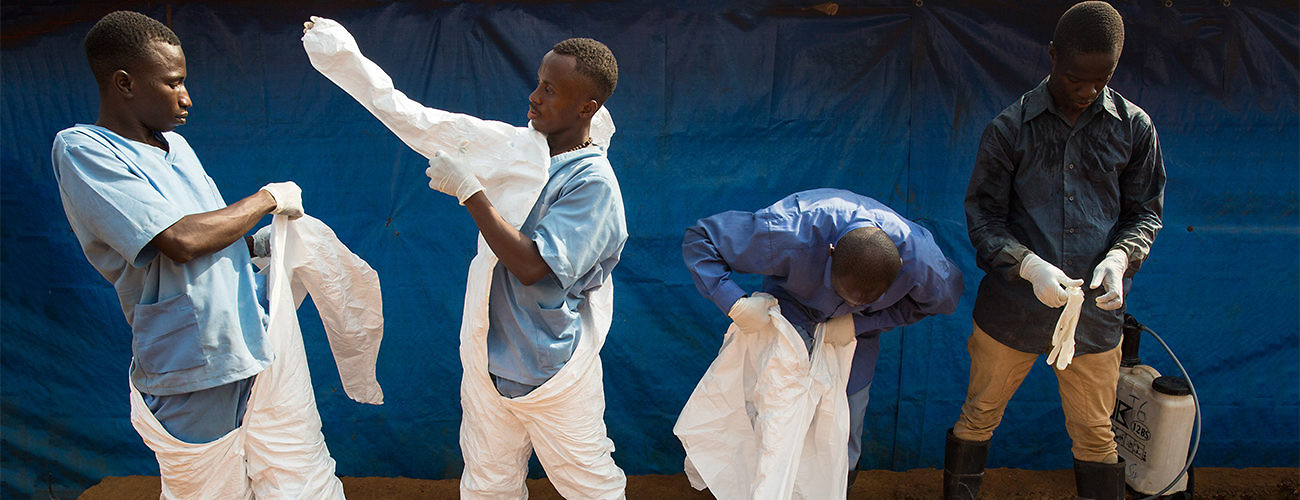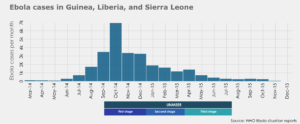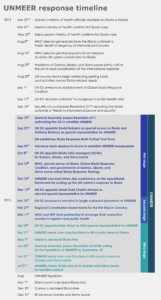Volunteers put on protective equipment to undertake safe and dignified burials, Freetown, Sierra Leone, December 24, 2014. (UNMEER/Martine Perret)
The Ebola outbreak of 2014–2016 was a fast-moving, multidimensional emergency that presented unprecedented challenges for the multilateral system. In response to the outbreak in Guinea, Liberia, and Sierra Leone, the UN established the first-ever emergency health mission, the UN Mission for Ebola Emergency Response (UNMEER).
UNMEER is an important case study of how the UN, with member-state support, can provide a whole-of-system response through coordination, partnership, and creative use of existing tools. This report, therefore, asks three questions about this groundbreaking mission: was it needed, was it properly structured, and did it deliver? In answering these questions, it offers eight broad lessons for UN crisis response:
- A sequenced approach and flexible mandate allow for better responses to unanticipated challenges.
- Effective responses draw upon the full range of UN tools and implementing partners based on the principle of comparative advantage, but they must take into account the challenge of integrating distinct organizational cultures.
- Flexible and predictable funding is critical for rapidly scaling up responses to multidimensional crises.
- Local engagement with key stakeholders during the peak of a crisis enhances long-term effectiveness.
- A system-wide communications strategy, bolstered by strong communications capacity in the field, is required from the outset.
- High-level coordination and oversight can provide flexibility and quick reaction.
- Close proximity to frontline responders and the site of the crisis enhances field coordination.
- A regional office can improve coordination across borders, but it must be joined with a strategy to account for the specificity of national and local contexts.










